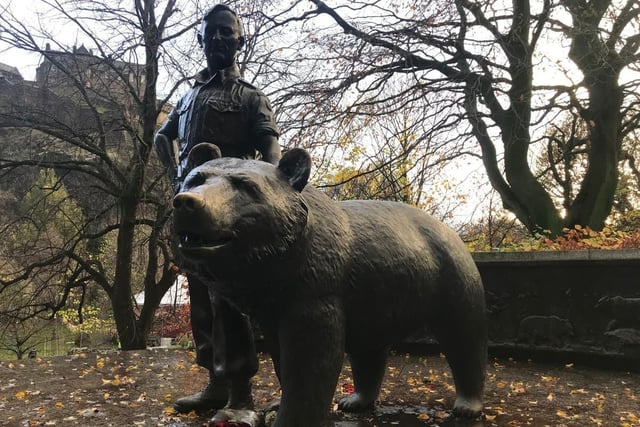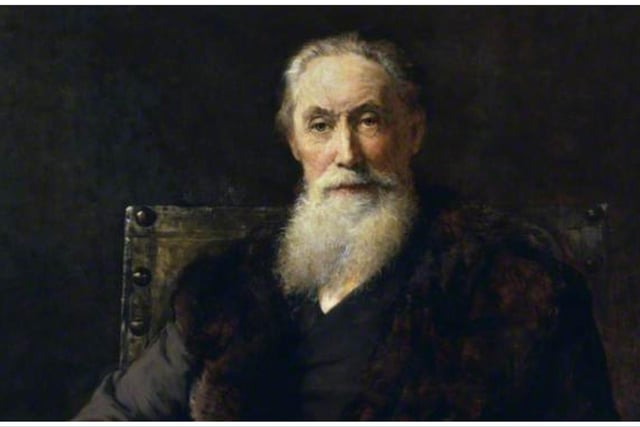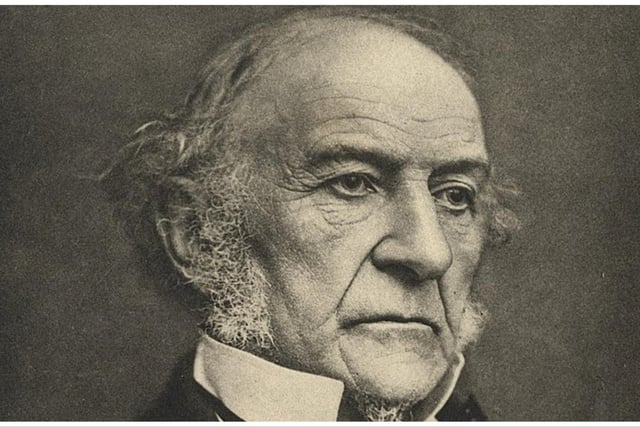As we celebrate 150 years of the Edinburgh Evening News, we’ve taken a look at the 150 most famous faces from the Capital.
In alphabetical order, we are going through these big names who have made an impact on Edinburgh and the world. We’ve already mentioned the likes of Robert Louis Stevenson, Pat Stanton and Irvine Welsh – so let’s have a look at the most influential Edinburgh people, from letters T to Y.

9. Wojtek The Bear
Wojtek the bear was adopted by a group of Polish soldiers who had recently been released from Siberian Gulags. The soldiers found the allegedly orphaned bear in Iran on their way to the Middle East from Siberia. They quickly formed a close bond with the bear, which was said to behave more like a dog or a small child than a wild animal, and Wojtek eventually become the mascot of the Polish II Corps 22nd Artillery. The bear joined the soldiers as they campaigned alongside allied forces in Iraq and Egypt and on to Italy where he carried artillery shells from supply vehicles to the company artillery positions during the 1944 Battle of Monte Cassino. Wojtek was officially made a Polish soldier, complete with his own papers when he needed to board the boat to get to Italy, made only possible by properly enlisting him and giving him a pay book. Wojtek was said to enjoy beer and cigarettes and received double rations due to his size of around 30 stone. After the end of hostilities Wojtek was demobbed to Winfield Camp for displaced soldiers in Berwickshire alongside the rest of his unit and was moved to Edinburgh Zoo where he lived until his death in 1963. The statue of “Edinburgh’s adopted bear” sits in Princes Street Gardens and was erected in November 2015. Photo: Third Party

10. William McEwan
William McEwan was a Scottish politician and brewer. In 1856, he founded the Fountain Brewery at Fountainbridge, and became a member of parliament for Edinburgh Central after the 1886 general election, representing the Liberal Party. He was returned unopposed in 1895 and continued to serve until 1900. Photo: Third Party

11. Willie Bauld
Known as the King of Hearts, William Russell Logan Bauld was born in Newcraighall on January 24, 1928. He joined Hearts in 1946 from Newtongrange Star, and was loaned out for a season to Edinburgh City. He made an immediate impact at Tynecastle when he reached the first team, bagging a hat trick on his debut. He helped Hearts to a Scottish Cup triumph in 1956, the League Championship in 1957–58 and 1959–60 and League Cup successes in 1955 and 1959. Bauld scored 355 goals in 510 Hearts games. For such an iconic figure with Hearts, it is incredible that Willie Bauld won just three Scotland caps. He died on March 11, 1977. Photo: Heart of Midlothian FC

12. William Ewart Gladstone
William Ewart Gladstone served four terms as Prime Minister between 1868 and 1894 and was MP for Midlothian from 1880 until 1895. Born in Liverpool to Scottish parents, he started off as a Tory and served under Robert Peel but went on to become perhaps the most famous Liberal of the Victorian era. His popularity with the working class earned him the nickname "The People's William". He introduced secret voting, backed Irish home rule and also "home rule all round" - a precursor of devolution. The "Midlothian campaign" which saw him elected in the constituency in 1880 is seen as pioneering modern methods of electioneering with rousing rallies aimed at capturing media attention. Photo: Third Party


